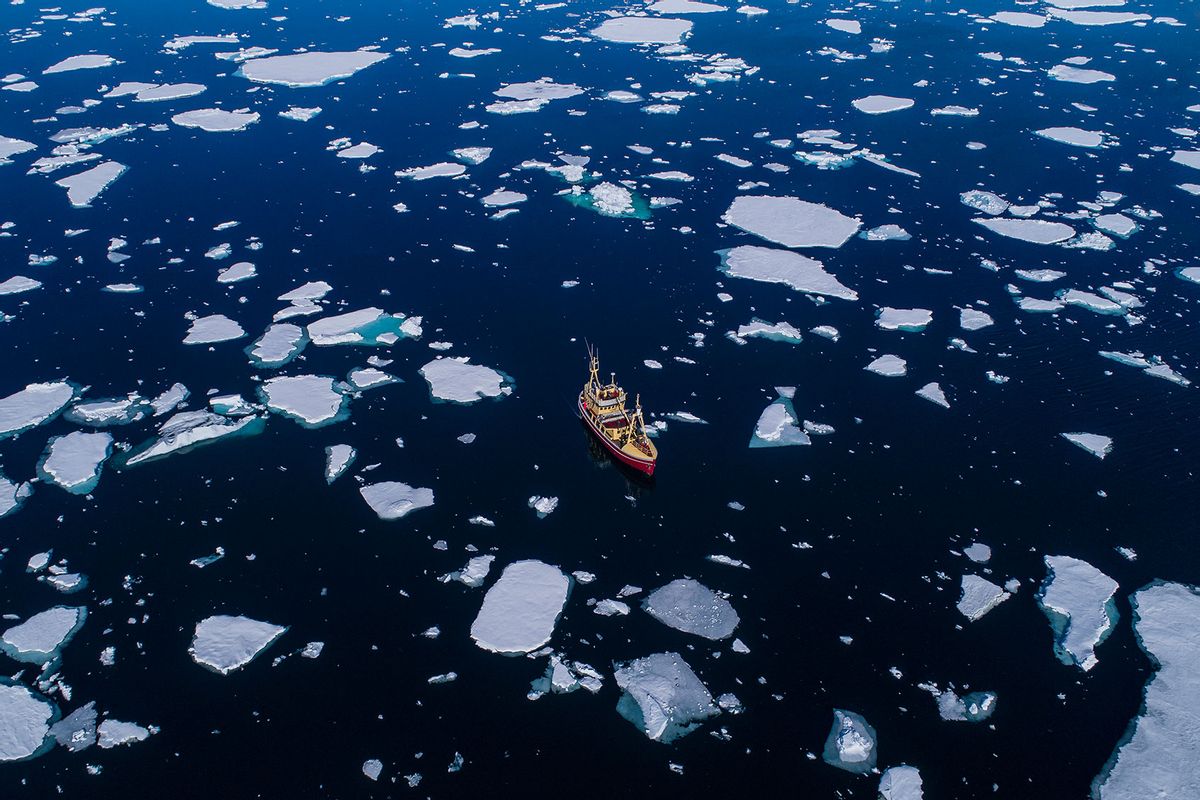Our oceans are getting hotter, a trend that is alarming experts, and human activity is clearly to blame. In particular sea surface temperatures (SST) are rising at an alarming rate, and scientists have spent months puzzling as to why. They have a good reason to worry: If sea surface temperatures continue rising, humans will endure worsened storms, rising sea levels and major changes to the Earth's ecology.
"This research rebuts claims that recent temperature changes are natural."
Now a recent study in the journal Nature Climate Change has discovered a "robust human ‘fingerprint’" behind increasing sea surface temperatures, one that the authors say is "likely to have wide-ranging impacts on marine ecosystems." Perhaps unsurprisingly, it all comes down to global heating.
Researchers from the Woods Hole Oceanographic Institution (WHOI) learned this by studying the SST seasonal cycle amplitude (SSTAC) — that is, the difference between the annual maximum and minimum sea surface temperatures — based on four sets of observational data. This included information gathered from satellite records, measurements from WHOI ships and floats that have been active since 1950 and various other types of monitoring systems.
The decades of research all pointed in the same direction: There is a human-caused signal in the SSTAC that stands out amidst the noise of other factors contributing to that increase. More specifically, the WHOI scientists found climate change-linked alterations to surface winds occurring in some regions, as well as similarly climate change-linked thinning of the ocean water's mixed-layer depths. The latter warming is significant because summer temperatures are amplified when that layer of water is less dense.
“This research rebuts claims that recent temperature changes are natural, whether due to the Sun or due to internal cycles in the climate system," said co-author Benjamin Santer, an adjunct scientist and distinguished scholar in WHOI's Physical Oceanography Department, in a statement. "A natural explanation is virtually impossible in terms of what we are looking at here: changes in the seasonal temperatures of the ocean. This research further rules out the claim that we don’t need to treat climate change seriously because it is natural.”
In addition to fueling more intense storms and exacerbating flooding through sea level rise, the rising sea surface temperatures will also have a major effect on the economy. The fishing industry depends on populations behaving according to known weather and ocean current patterns, all of which are being disrupted by climate change.
“This robust human fingerprint in the seasonal cycle of ocean surface temperature is expected to have wide-ranging impacts on marine ecosystems," co-lead author Dr. Jia-Rui Shi added in a statement. "This can dramatically influence fisheries and the distribution of nutrients. Gaining insight into the anthropogenic influence on seasonality is of scientific, economic and societal importance.”
Want more health and science stories in your inbox? Subscribe to Salon's weekly newsletter Lab Notes.
"Gaining insight into anthropogenic influence on seasonality is of scientific, economic and societal importance."
The warming oceans are part of many other trends as the planet heats from burning fossil fuels. The winter of 2023-2024 is already being dubbed the "lost winter" because of the unusually sparse amounts of snow, ice and cold. Indeed, it proved to be the hottest winter on record, and as one expert told Salon earlier this month, rising sea surface temperatures significantly fueled this trend.
"The subsurface ocean temperature in the equatorial Pacific Ocean" is notable, Dr. James Hansen, a professor of climatology at Columbia University wrote to Salon, in part because other natural factors that could have explained it simply do not do so. Hansen observed that the excess heat this year was much less than would normally be present prior to a Super El Niño (an unusually strong El Niño), and this was no Super El Niño.
Hansen says that the National Oceanic and Atmospheric Administration (NOAA) "simply looked at the [sea surface temperatures] in the Niño region, saw that it almost reached +2º C, and declared it 'Super.' Yet even NOAA scientists acknowledge that the driving force was not the traditional weather pattern, but the unusual injection of greenhouse gases caused by human activity. "The excess heat in the equatorial Pacific that is belched out during the El Niño was not super at all, yet we got record temperatures."
Hansen said, "the El Niño was half-baked and yet it easily drove record global temperature."
We need your help to stay independent
Perhaps the most notable problem associated with rising sea surface temperatures is that the ocean traps heat, causing a ripple effect that impacts the entire planet. This isn't surprising as the ocean covers roughly 71 percent of the planet's surface. This is why Dr. Michael E. Mann, a professor of Earth and Environmental Science at the University of Pennsylvania, told Salon last year that he was especially alarmed at how 2023 set a new record in ocean heat content. Mann argued this development "is equal in significance" to factors like rising overall global surface temperatures "as the warming of the oceans is helping destabilize ice shelves and fuel more powerful hurricanes and tropical cyclones."
In August NASA proclaimed that "the ocean has a fever," with NASA oceanographer Josh Willis saying that (in addition to El Niño) the trend is being driven by "long-term global warming that has been pushing ocean temperatures steadily upward almost everywhere for a century.”
In short, as it becomes increasingly clear that human activity is driving major changes in our environment, it will be essential to focus on the ocean as well as the land-based surfaces where most humans spend the majority of their lives.
"Gaining insight into anthropogenic influence on seasonality is of scientific, economic and societal importance," the authors of the study concluded in their abstract.
Read more
about climate change:



Shares